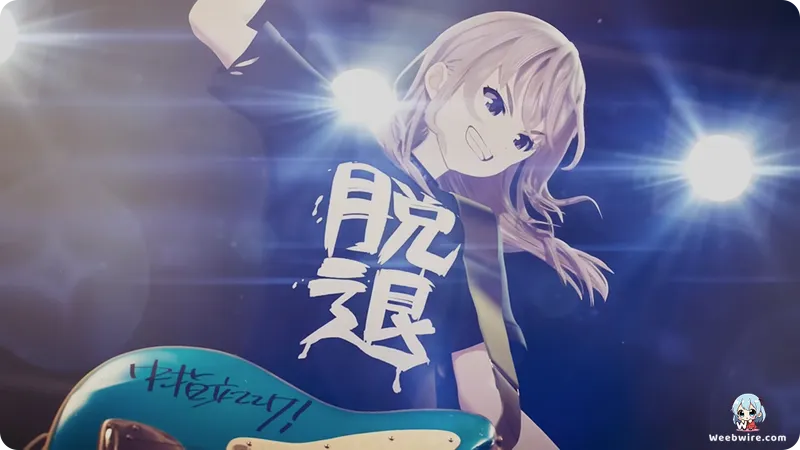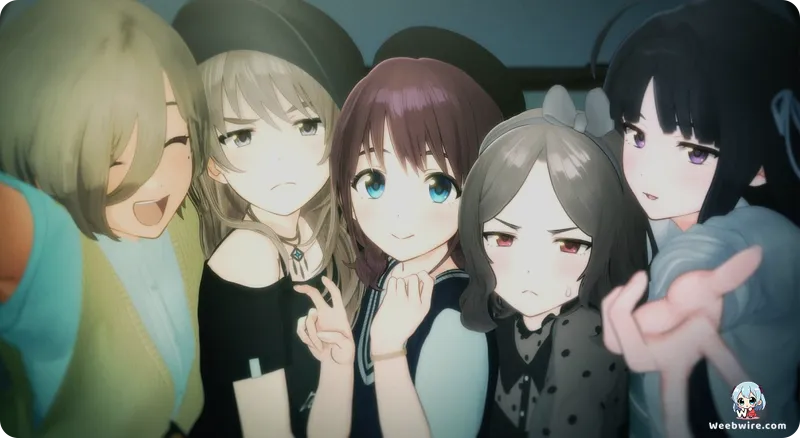Behind the Scenes of Girls Band Cry: How Cutting-Edge CGI and a Real-Life Band Are Redefining Music Anime

The anime production landscape is continuously evolving, yet few recent series have committed to a technical vision as ambitious as Girls Band Cry. This series, which chronicles the formation and challenging journey of the band TOGENASHI TOGEARI, serves as a compelling case study in cutting-edge animation techniques and profound musical dedication. Shifting away from traditional 2D artistry or standard hybrid methods, the show utilizes a heavy reliance on 3D Computer Generated Imagery (CGI), meticulously executed by the esteemed Toei Animation studio.
This choice was not merely a budgetary consideration; it represented a fundamental artistic philosophy aimed at achieving an extraordinary level of realism, particularly during complex musical sequences. The production team opted for an aesthetic frequently described as 'hyper-realistic,' employing methods akin to rotoscoping to capture movement with unparalleled fidelity.
The Precision of Motion Capture
The true technical feat lies in animating the intricate, rapid fingerwork demanded by instruments such as guitars, bass, and drums. This is a task notoriously difficult for standard animation practices. To ensure absolute precision, the creators leveraged advanced motion capture technology. Specialized sensors were fitted onto professional musicians, tracking every strum, fret position, and percussive strike.
This rigorous process guaranteed that the on-screen performances perfectly mirrored the real-life playing of the actual songs. This elevates the musical segments far beyond simple visual accompaniment, turning them into detailed, almost instructional demonstrations of instrument mastery. This commitment required substantial post-production refinement to smoothly integrate the realistic movements with the stylized character designs.
Voice Actors as Instrumentalists
Beyond the visual innovation, the authenticity of Girls Band Cry is deeply rooted in its voice cast. The actresses who lend their voices to the band members Rina, Natsumi, Yurika, Mirei, and Syuri are also the instrumentalists and vocalists who perform the music. This dual commitment is a significant departure from standard industry practices where session musicians often handle the tracks separately.
In this case, the actors genuinely learned and performed the instruments, effectively forming an active, real-world band outside the fictional narrative. This cohesion ensures that the emotional sincerity expressed in the dialogue seamlessly translates into the raw energy and passion of their music, as the performers intimately understand both their characters' emotional arcs and the technical demands of the score.

Symbolism and Narrative Realism
Further enriching the series is the symbolic depth embedded in the band’s enigmatic name, TOGENASHI TOGEARI, which translates to 'Thornless, Yet Thorns Exist.' Conceptualized by J.A.I. (Jumping At Illusions), this paradoxical title perfectly encapsulates the central tension of the story: the hidden struggles of young adulthood. While the characters present a seemingly 'thornless' exterior pursuing their artistic dreams, the story consistently unveils the painful 'thorns' beneath the surface, addressing pressures like economic hardship, creative failure, and the performative nature of modern social identities.
Director Kazuo Sakai deliberately grounded the narrative in post-high school reality, focusing on mundane challenges like securing practice space and managing part-time jobs. This offers a refreshingly unglamorous view of aspiring artistry. This narrative realism, coupled with the groundbreaking CGI and genuine musical talent, establishes Girls Band Cry as a truly distinctive and technically pioneering force in contemporary music anime.
Credits
Girls Band Cry
Author
J.A.I. (Jumping At Illusions)
Cover Art
nari
Studio
Toei Animation
Publisher
King Records
Producers





